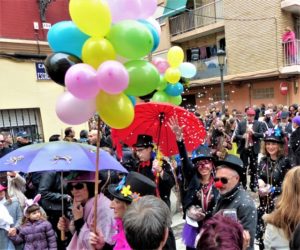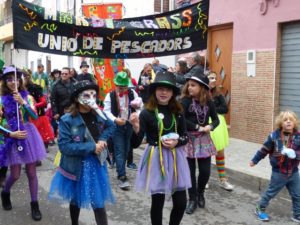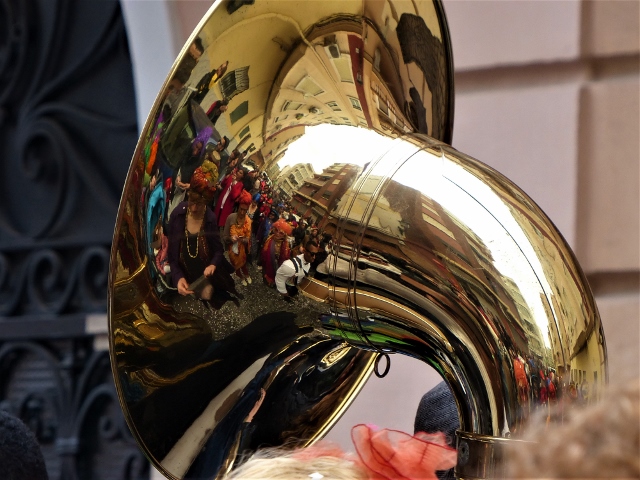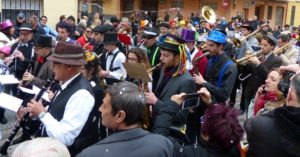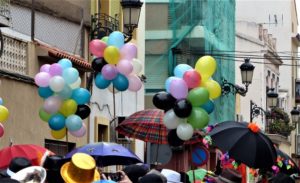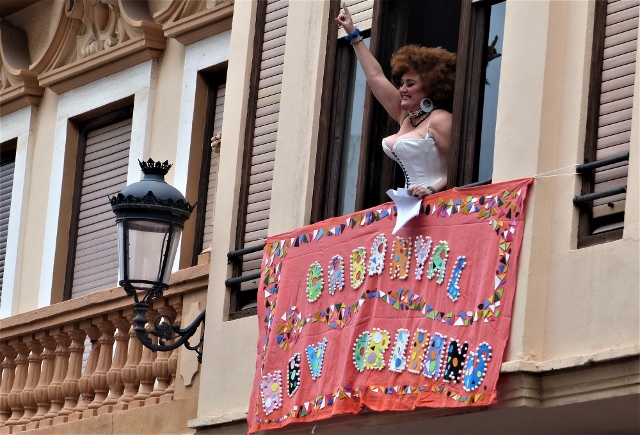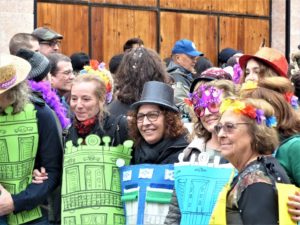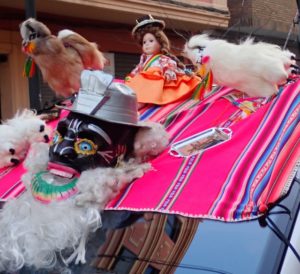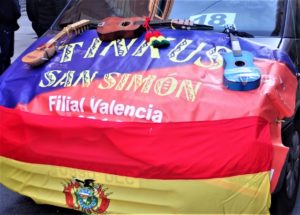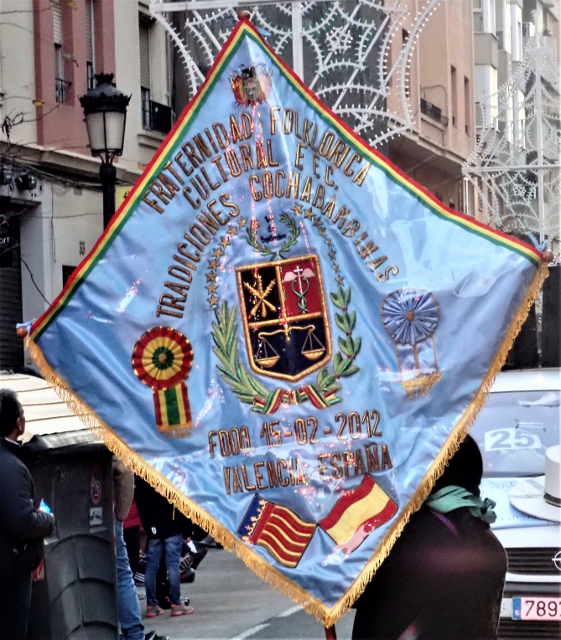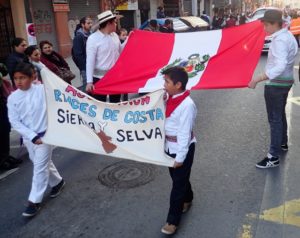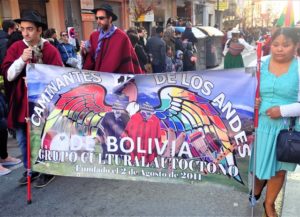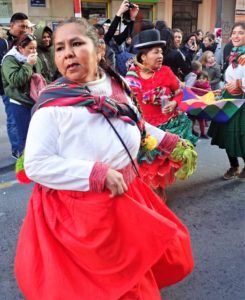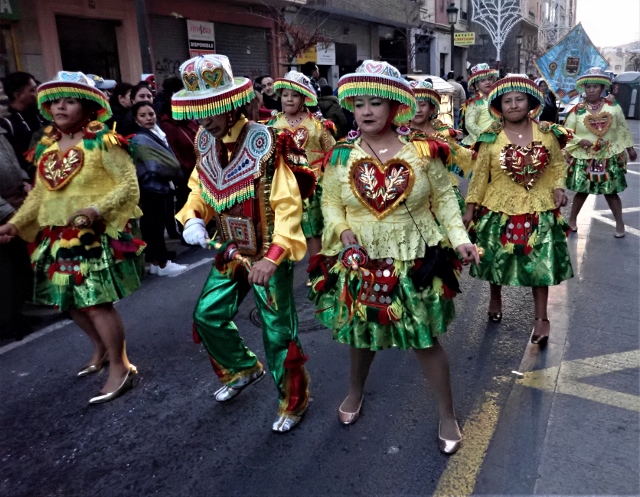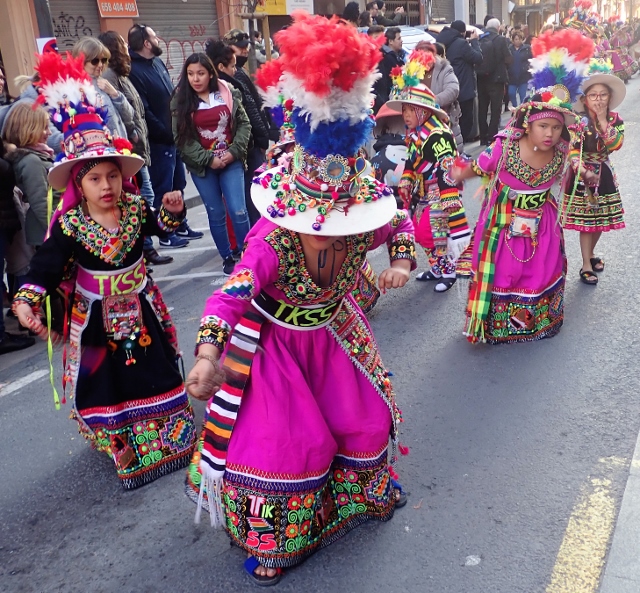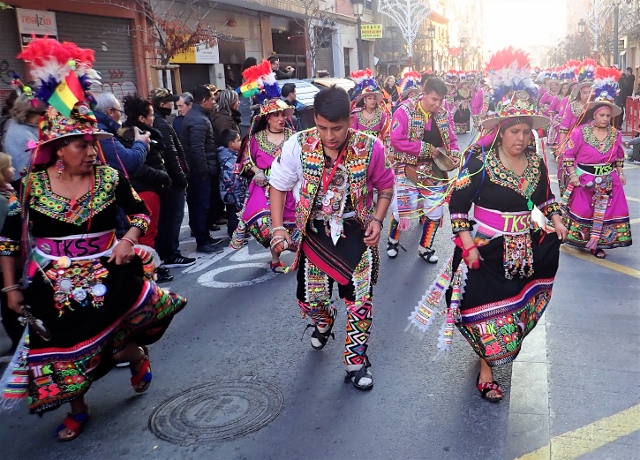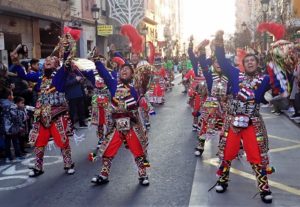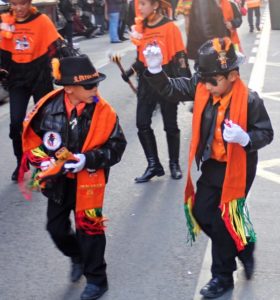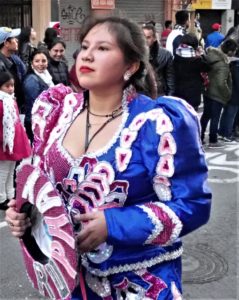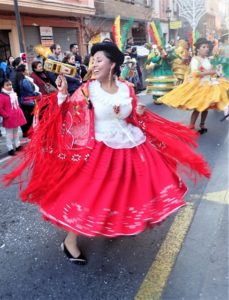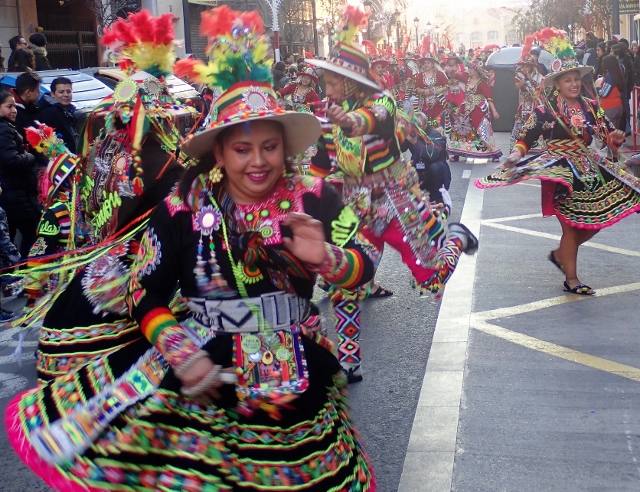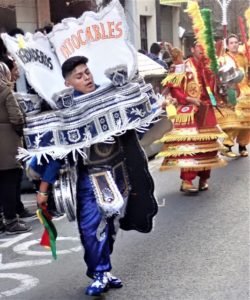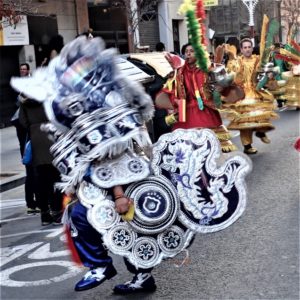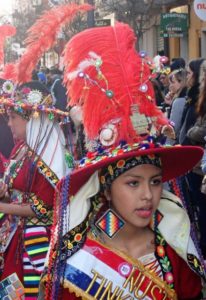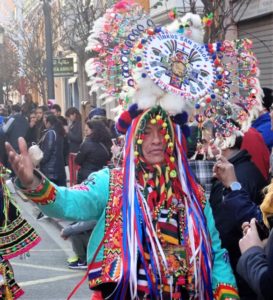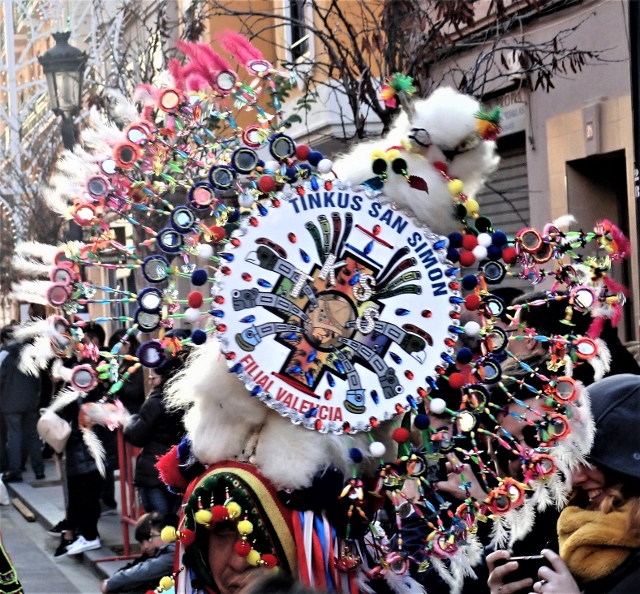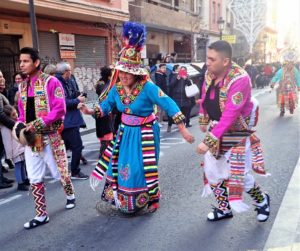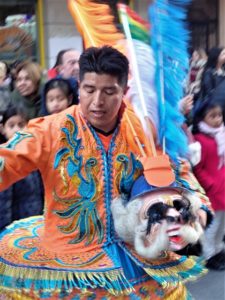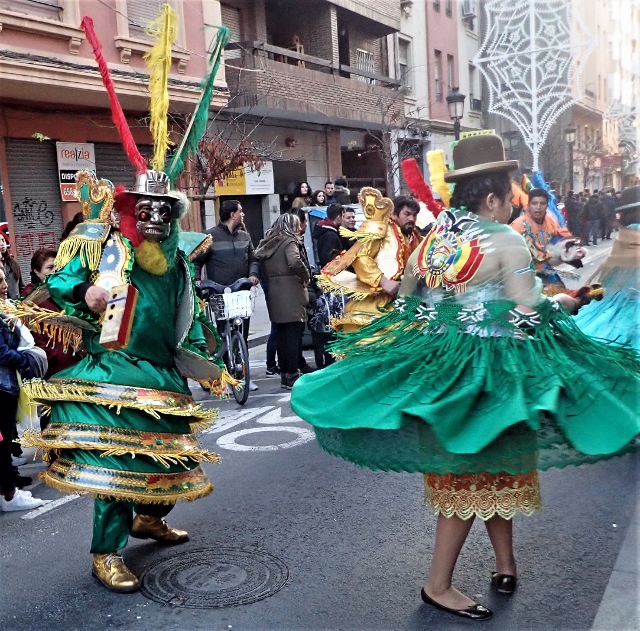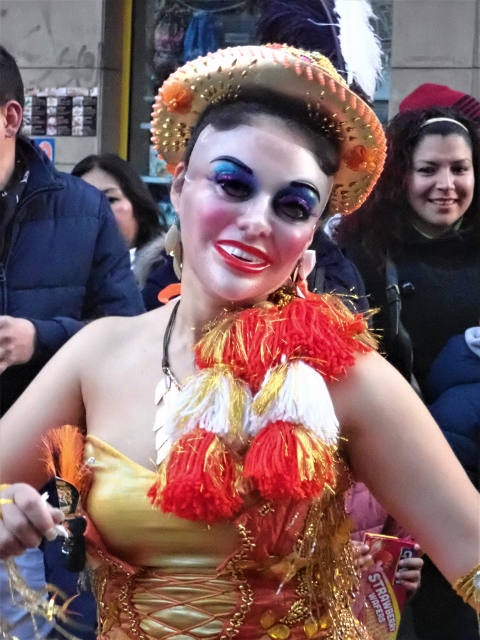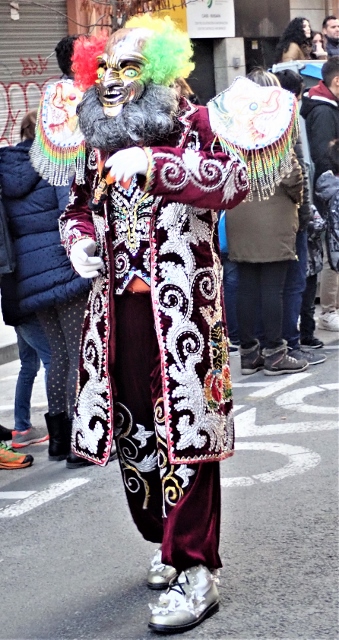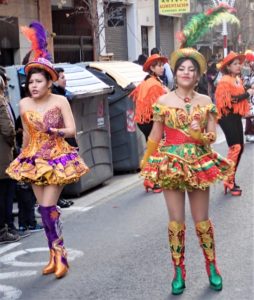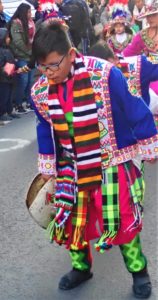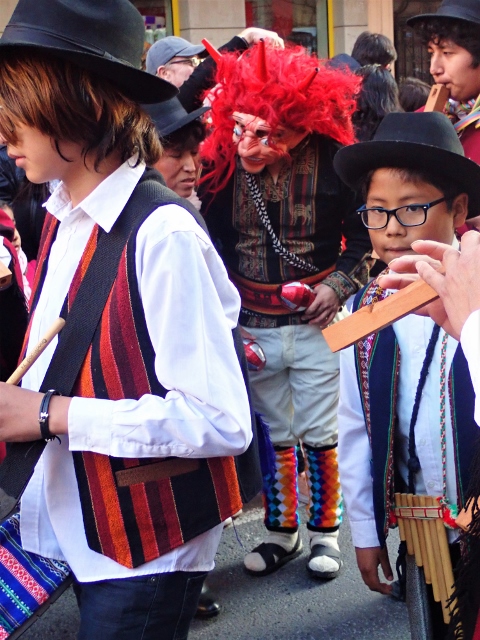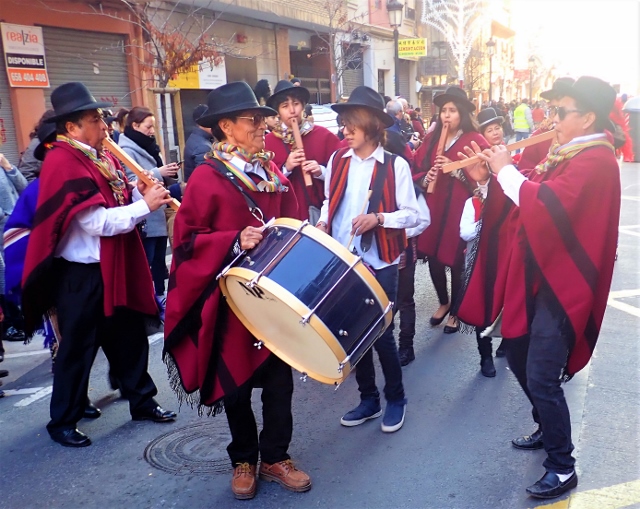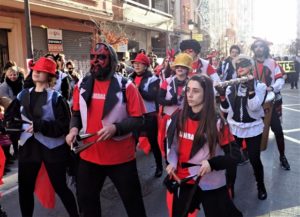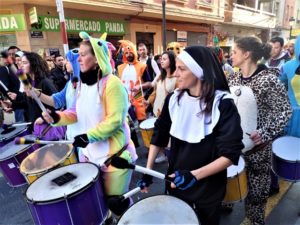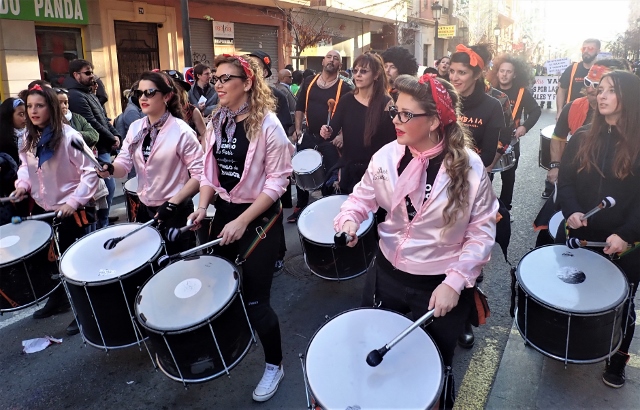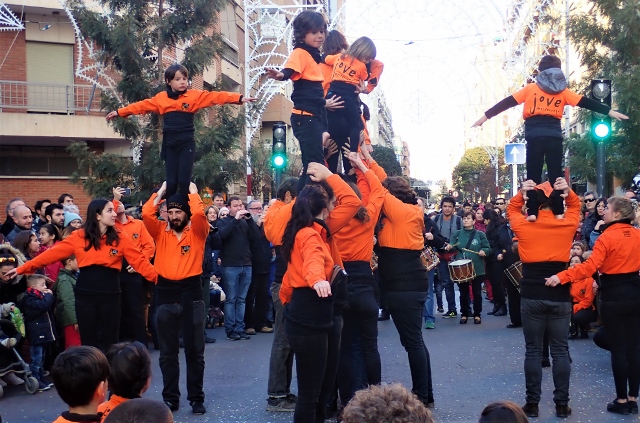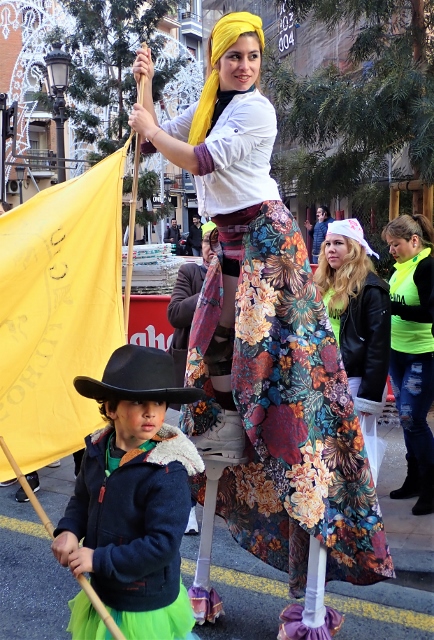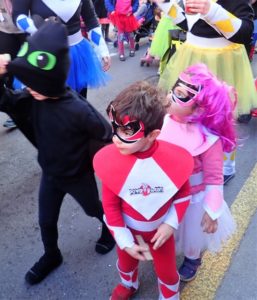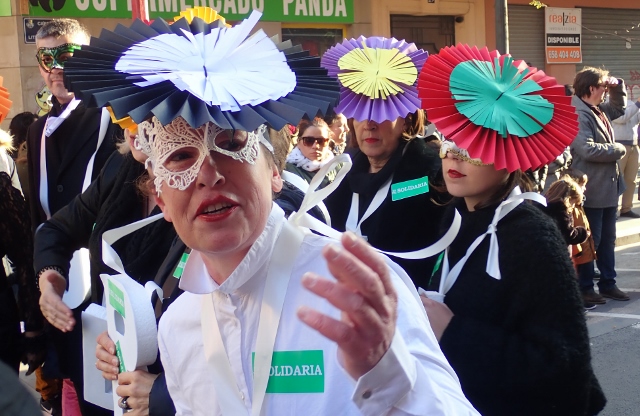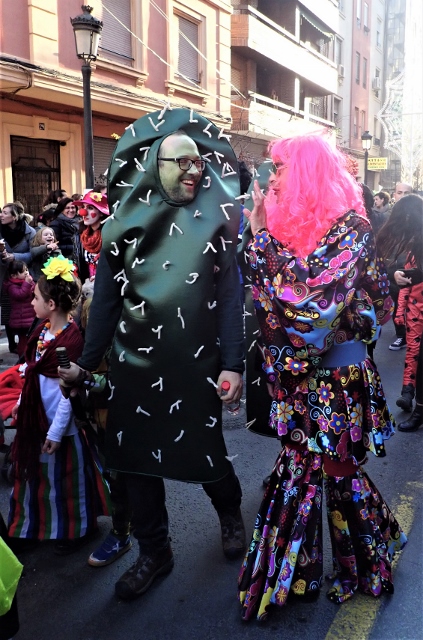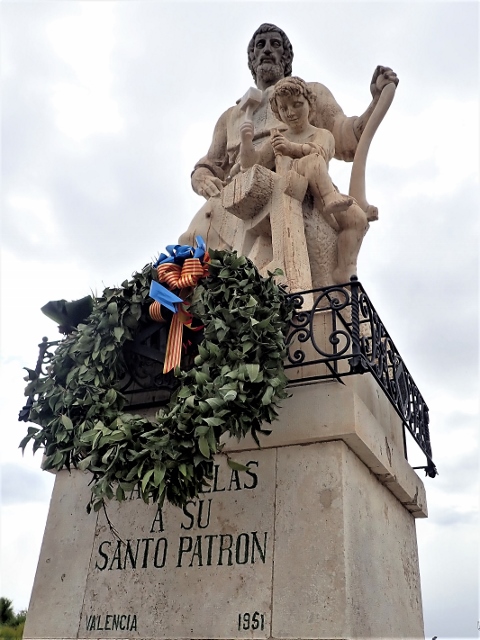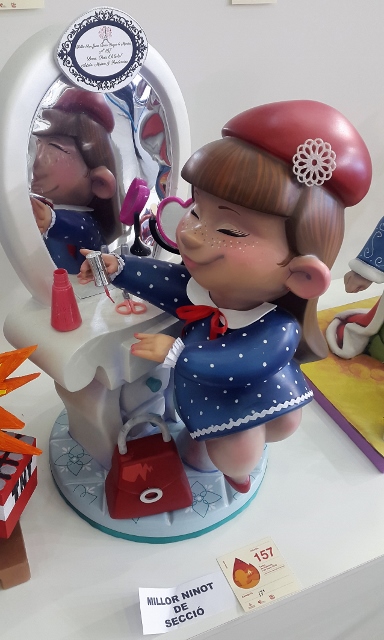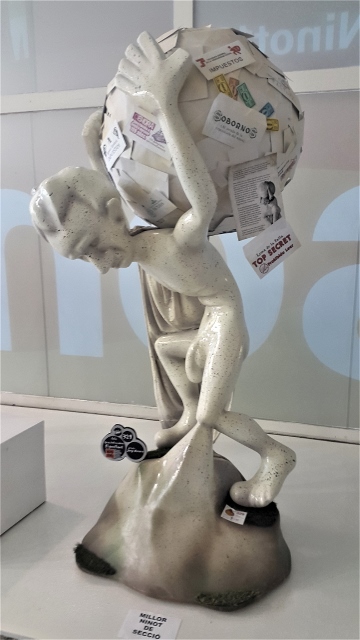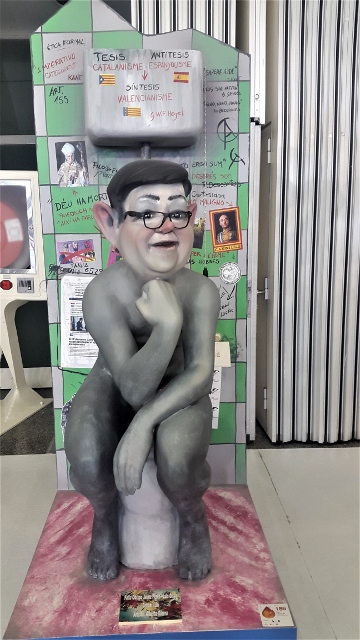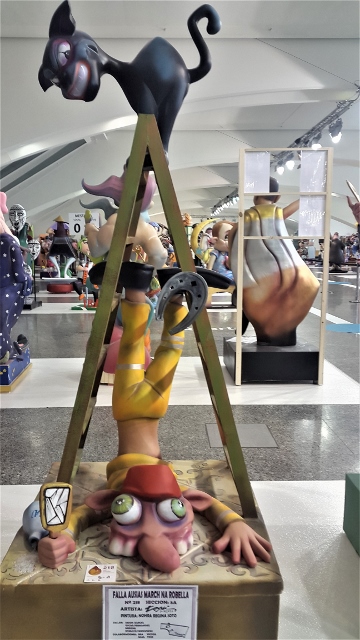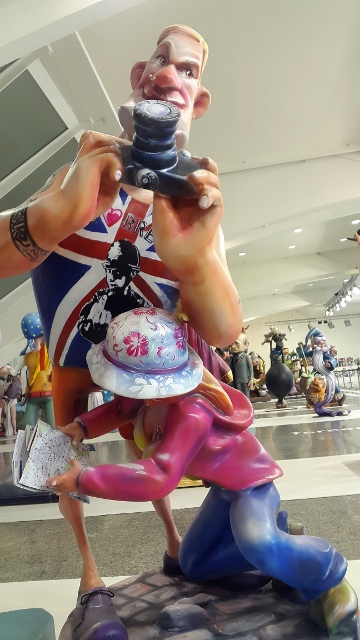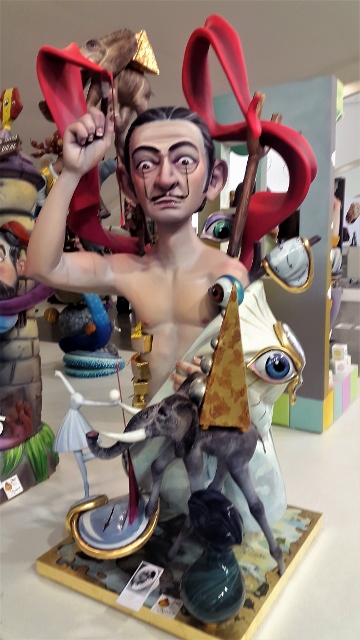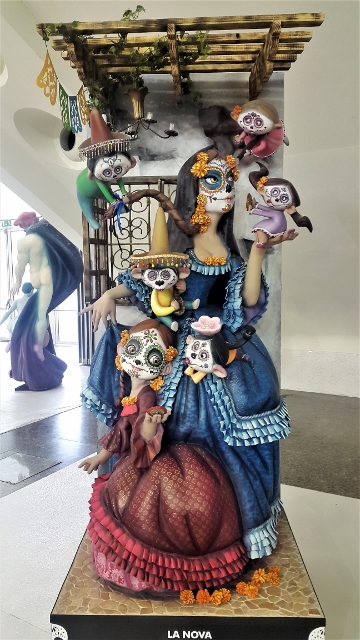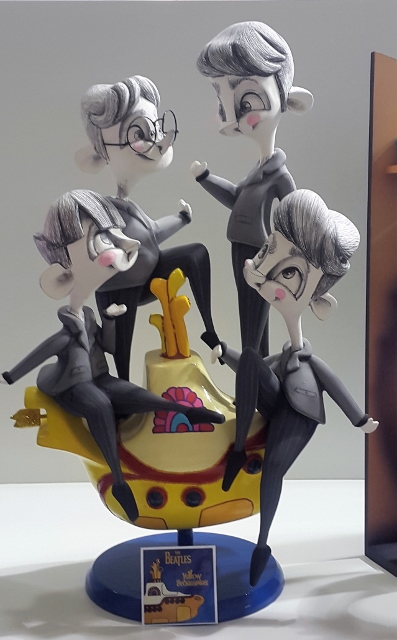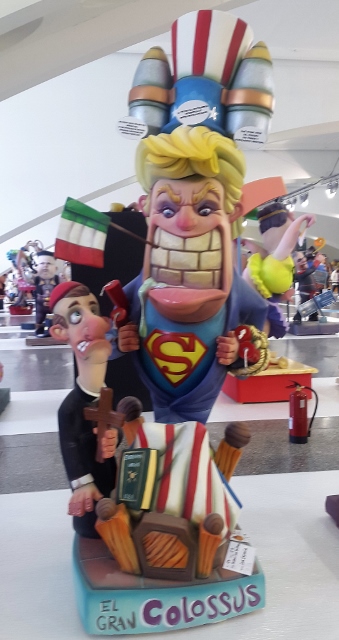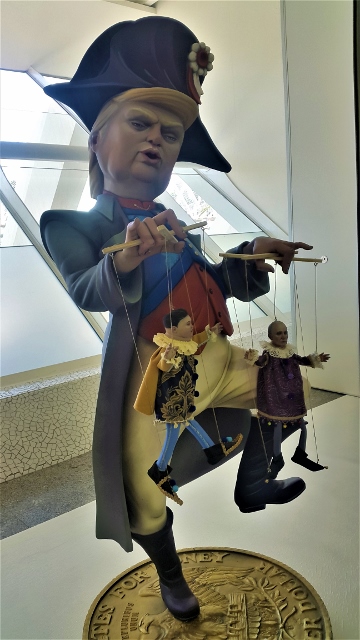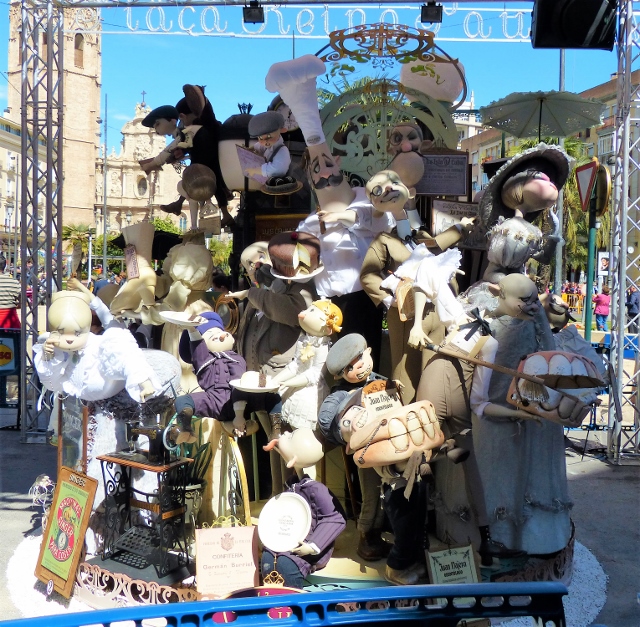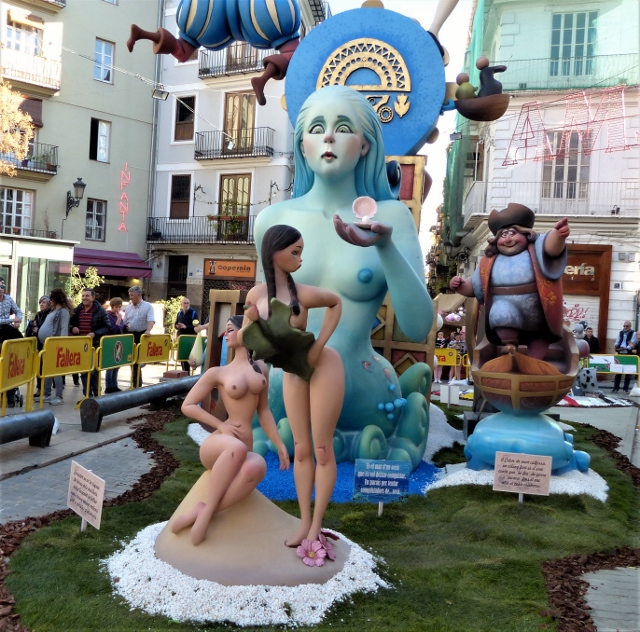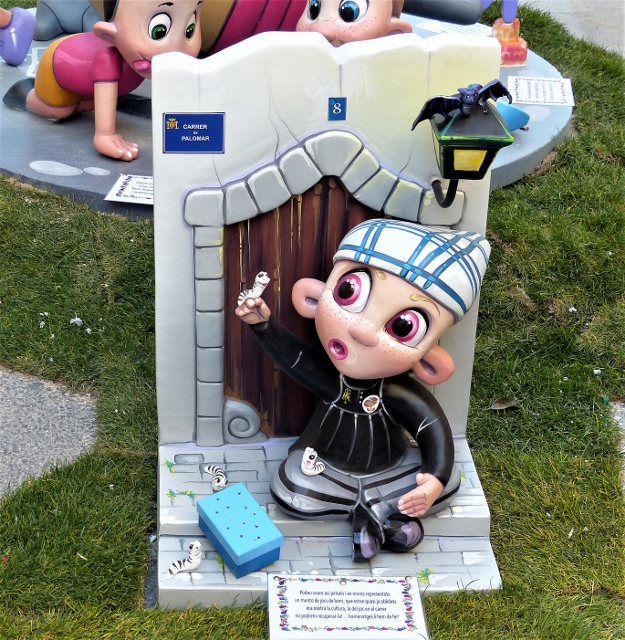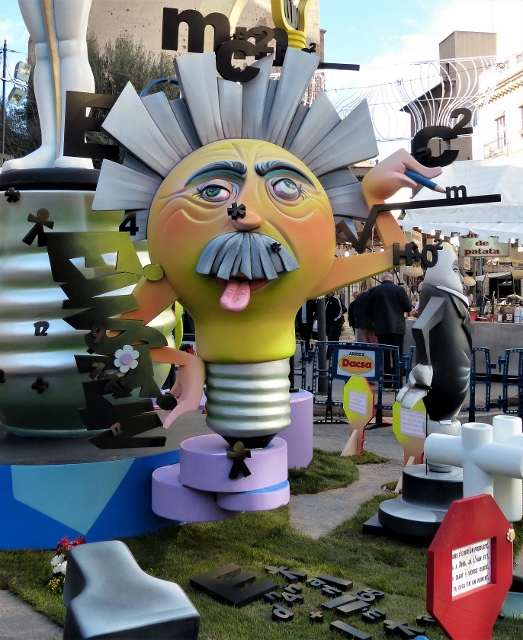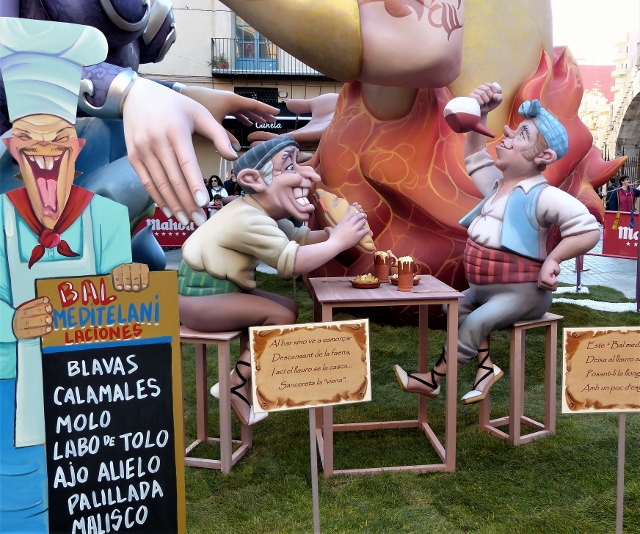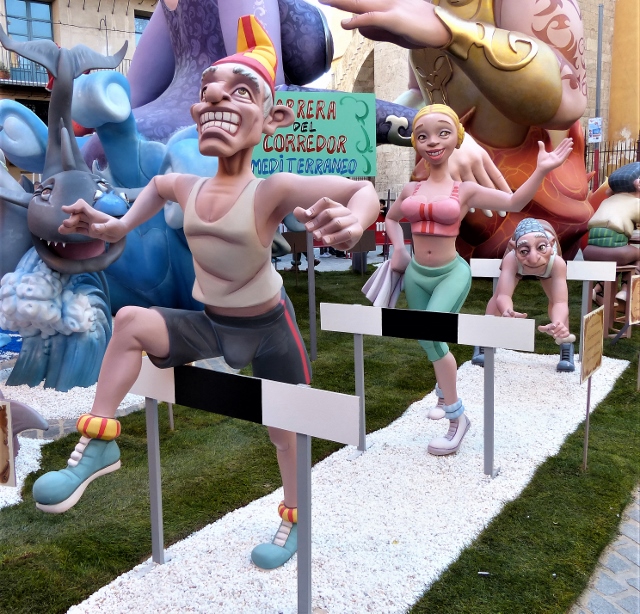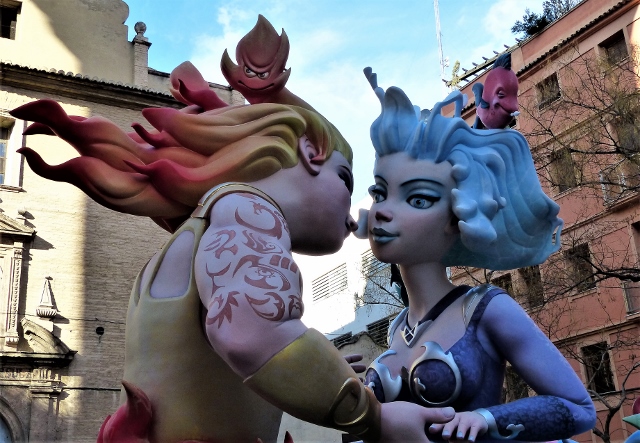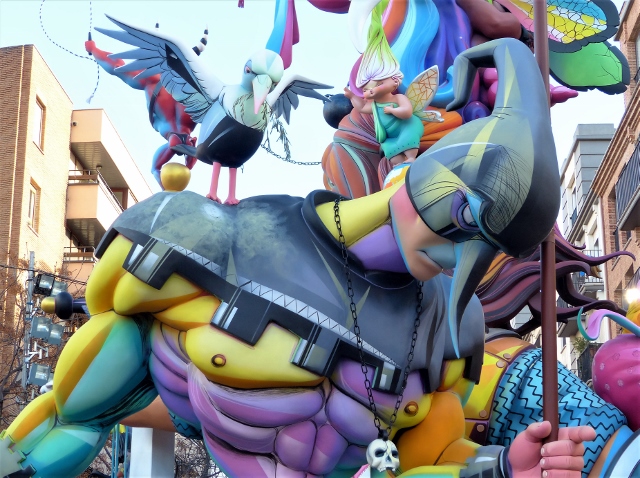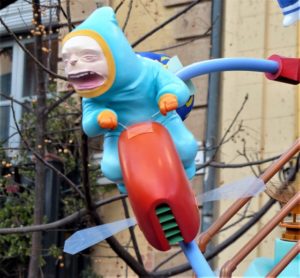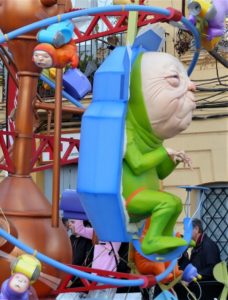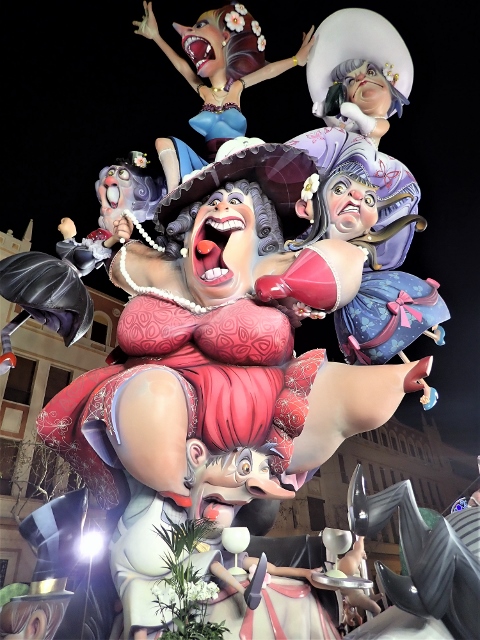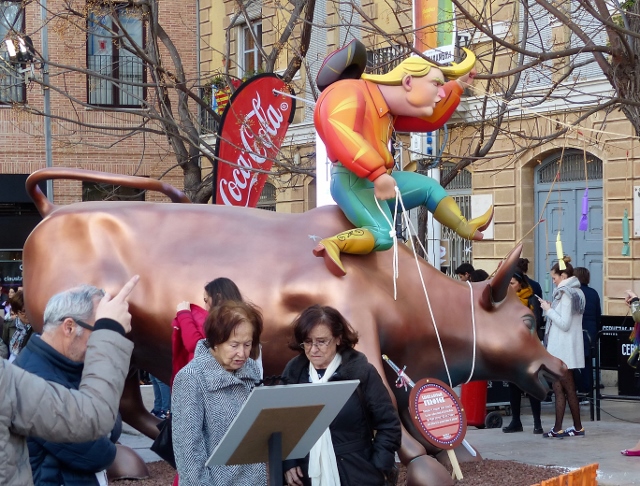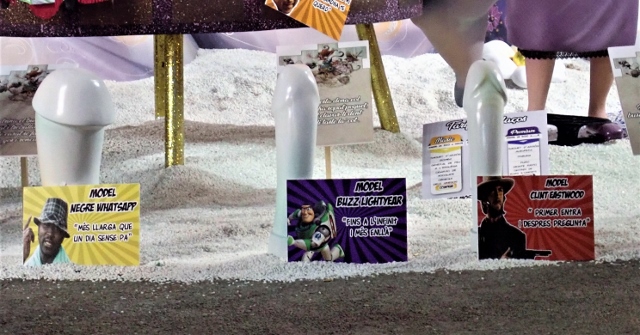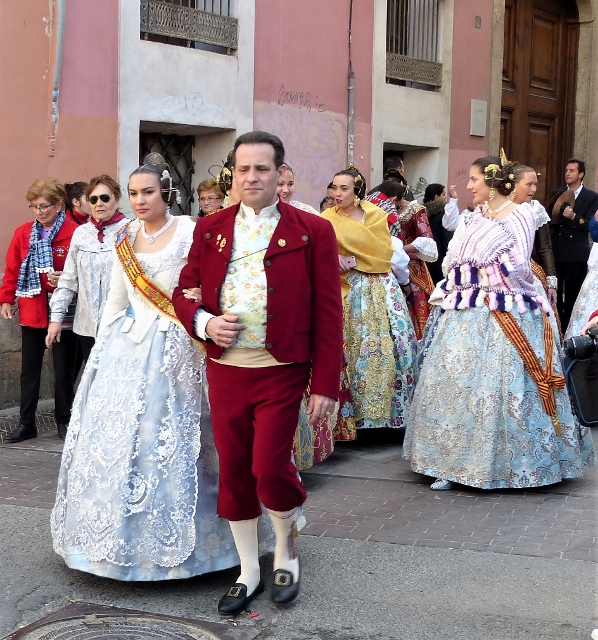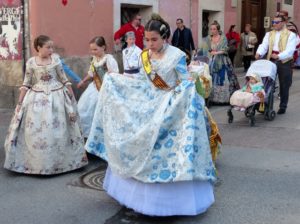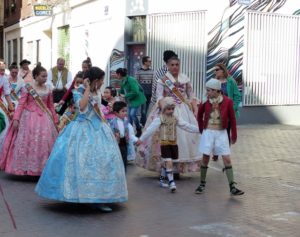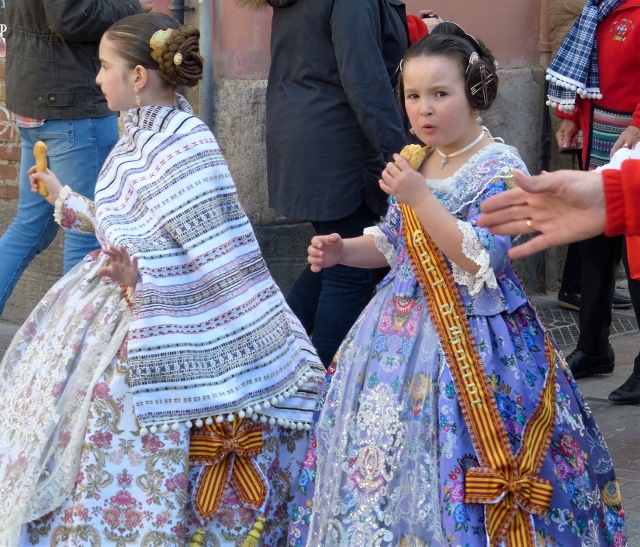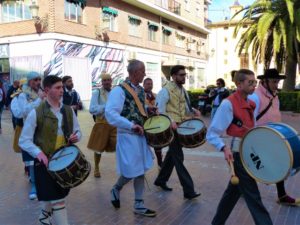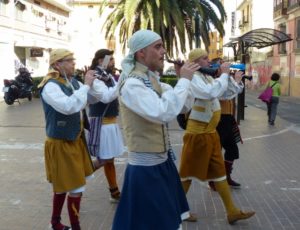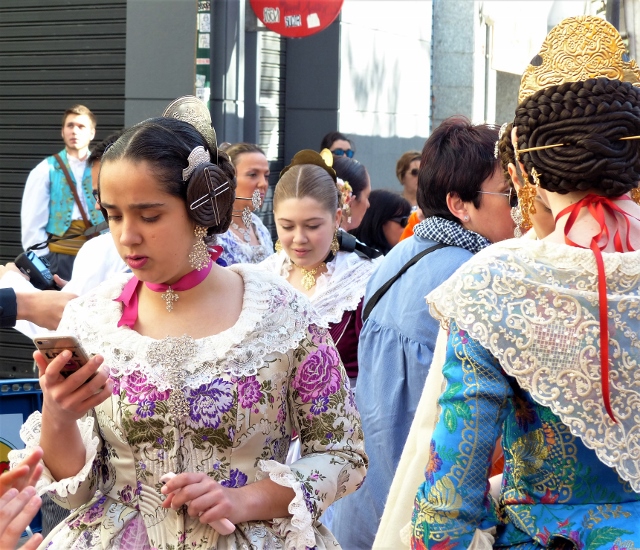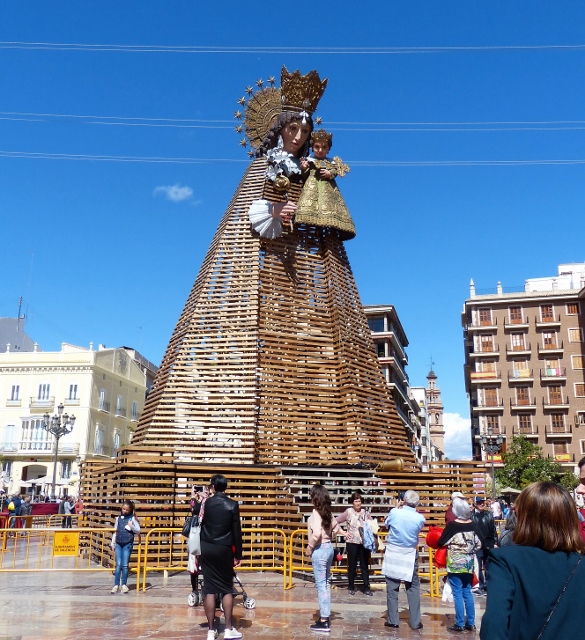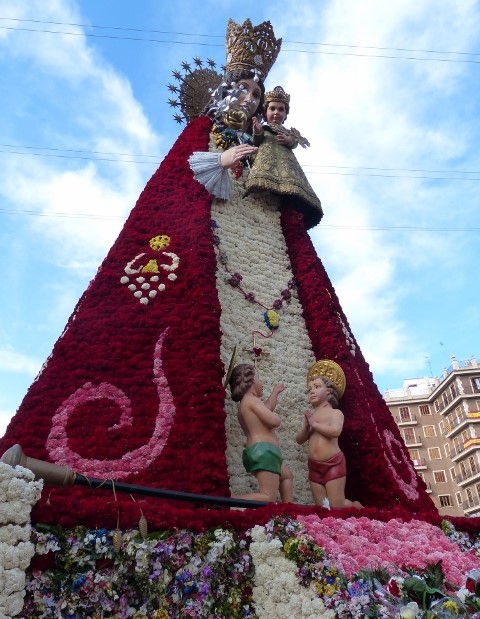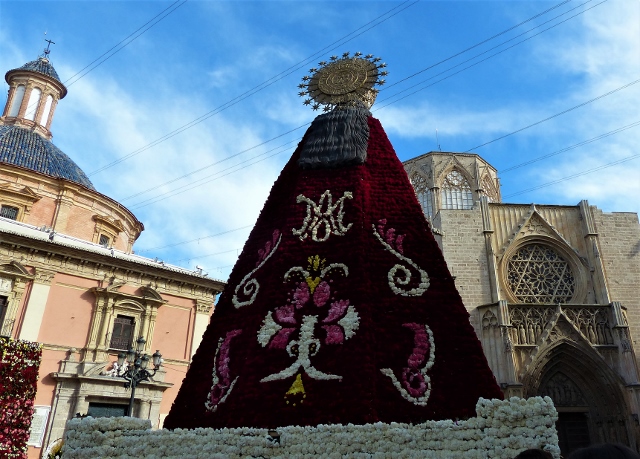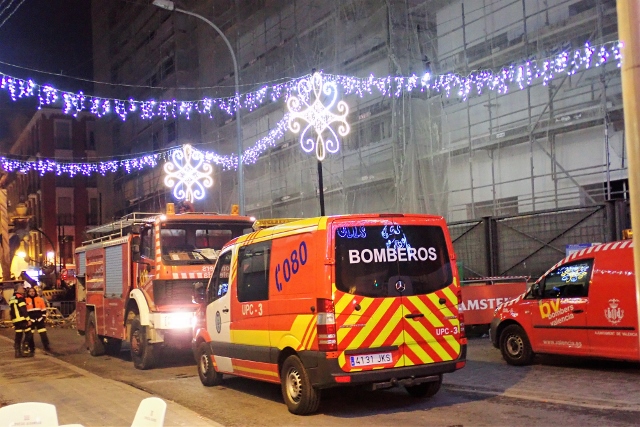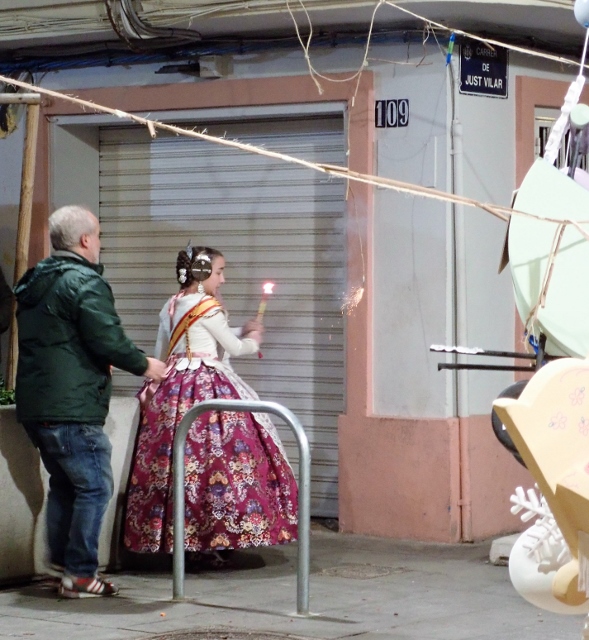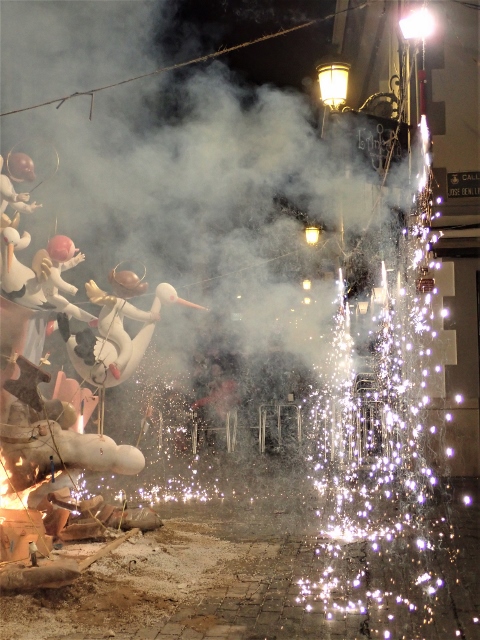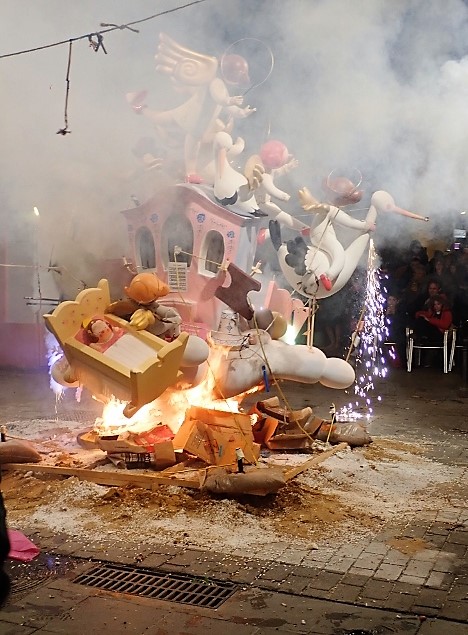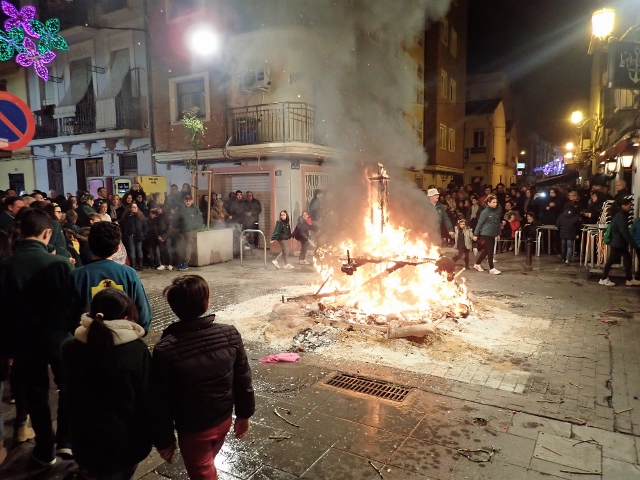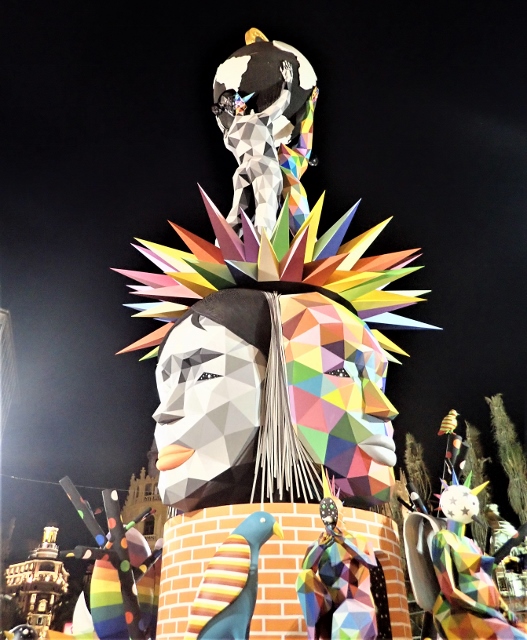This post is rather shorter and sweeter in terms of words than my usual ramblings, though I hope that the abundance of photographs makes it a colourful read.
In keeping with the Spanish tradition, Valencia knows how to party. Fiestas abound. Since the beginning of 2018 we have seen Three Kings Day, Carnival, Falles and preparations for San Vincente Ferrer feast day.
Unfortunately we didn’t see much of Los Reyes Magos [Three Kings] Parade, basically due to the number of people who got there before us! It is very much aimed at children and is the time when they receive their “Christmas” gifts. Throughout the parade, sweets and sometimes small toys are thrown to the crowd by the Kings and their entourage.
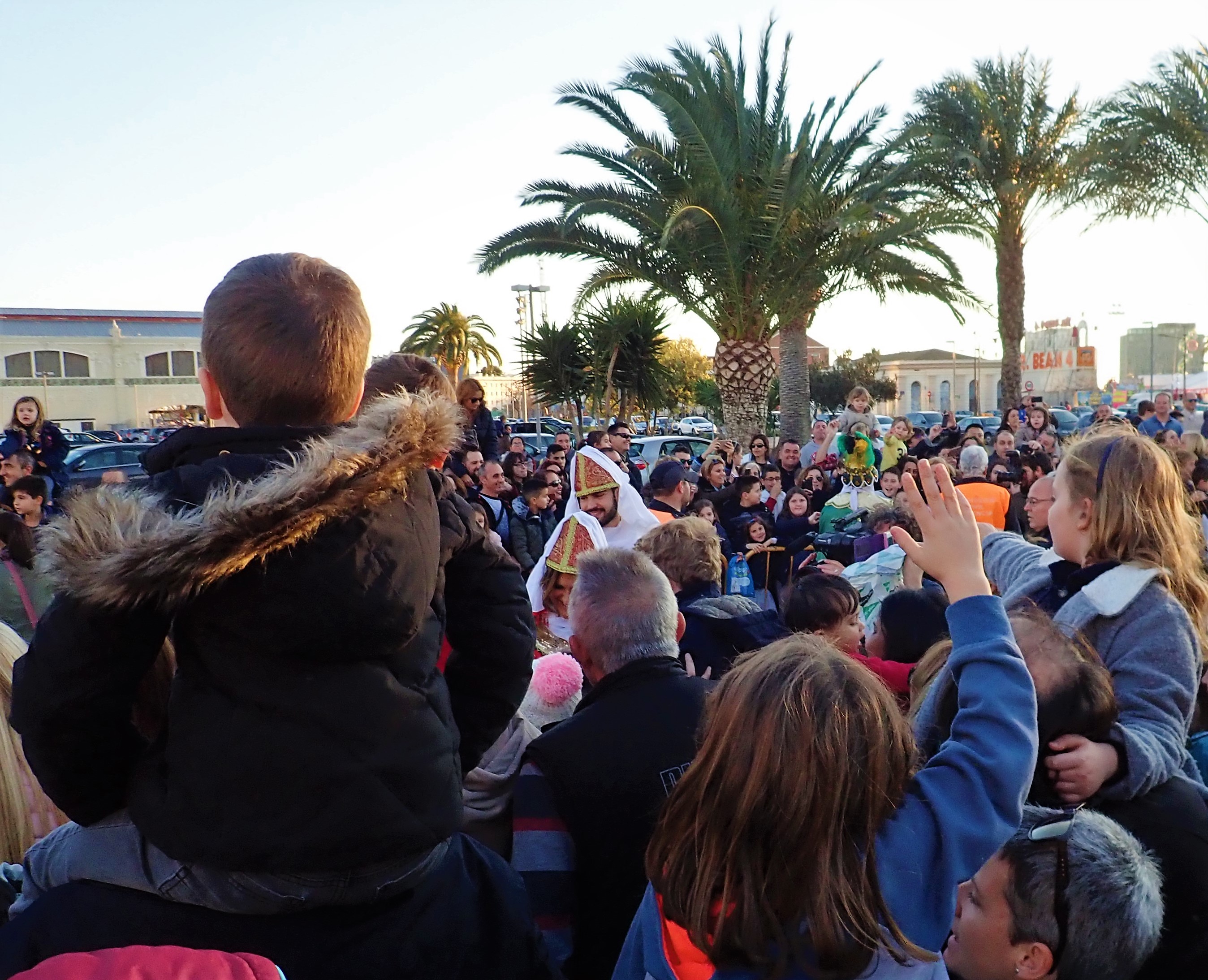 The Kings arrive by ship and then walk a route which takes about three hours before they reach the Plaza de Ayuntamiento. We just saw their arrival at the marina.
The Kings arrive by ship and then walk a route which takes about three hours before they reach the Plaza de Ayuntamiento. We just saw their arrival at the marina.
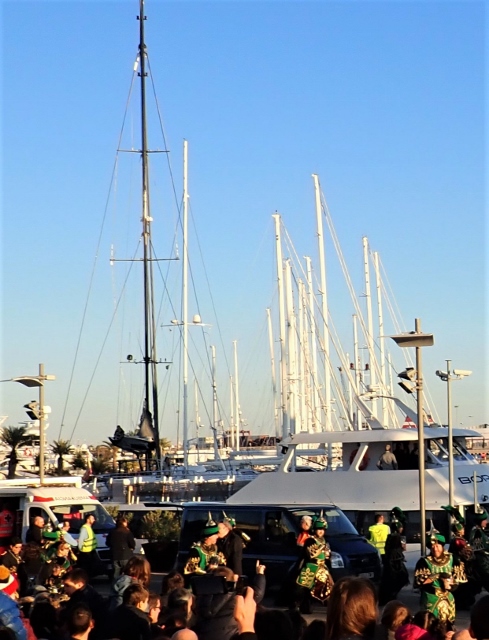 Whilst Carnival is celebrated, it is perhaps rather more low key in Valencia because of the city’s Fallas festival which takes place a couple of weeks later. However, several of the “barrios” host small carnivals and we went to two of them.
Whilst Carnival is celebrated, it is perhaps rather more low key in Valencia because of the city’s Fallas festival which takes place a couple of weeks later. However, several of the “barrios” host small carnivals and we went to two of them.
First of all, Cabanyal ….
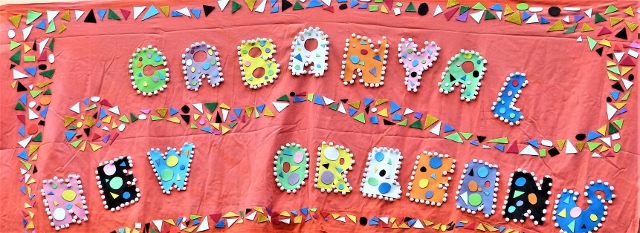 …. which is the old fisherman’s quarter close to the marina.
…. which is the old fisherman’s quarter close to the marina.
Their theme was Mardi Gras.
The very popular “queen” of the proceedings gave a rousing speech …..
….and all in all it was very much a fun local family affair.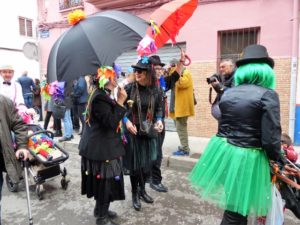
Then it was the turn of Ruzzafa…
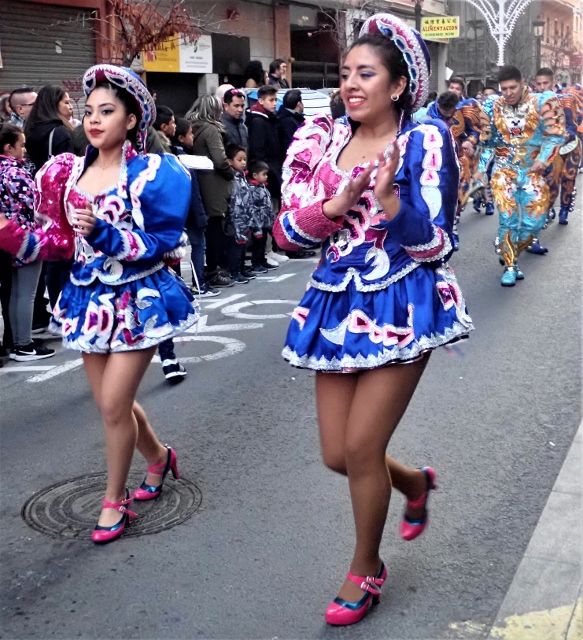 ……which hosted a “folkloric” carnival with various South American communities being represented.
……which hosted a “folkloric” carnival with various South American communities being represented.
Performers and dancers in their hundreds…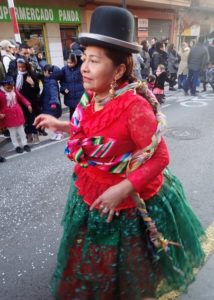
….and head-dresses….
Then, every March Valencia gets ready to welcome the spring – with the main event in its annual fun packed calendar, Falles – a traditional celebration held in commemoration of Saint Joseph.
Each neighbourhood of the city has an organised group of people, the “Casal Faller”, also known as the “Comissío Fallera”, which works all year long holding fundraising parties and dinners.
The Valencian people, and any visitors lucky enough to be in the city over the festival period, really get to live life to the full as the city celebrates. The general gist is that everything that is bad is burnt and the new season is reborn from the ashes.
There are different versions regarding the origin of the Falles festival but the most popular one seems to be that the Falles started in the Middle Ages, when artisans disposed of the broken artefacts and pieces of wood they saved during the winter by burning them to celebrate the spring equinox. Valencian carpenters used planks of wood called “parots” to hang their candles on during the winter to provide light to work by. With the coming of the spring, they were no longer necessary, so they were burned. Over time, and with the intervention of the Church, the date of the burning of these parots was made to coincide with the celebration of the festival of Saint Joseph, the patron saint of carpenters.
This tradition continued to evolve. The parot was dressed with clothing so that it looked like a person; features identifiable with some well-known person were added as well. The “Ninot” [character figure] was born.
These figures, often “disney-like” in appearance might just be fantasy creations but sometimes represent politicians and other celebrities from the local neighbourhood, the city, the country and the world. These were then placed on a pedestal so they could be seen in the distance.
Until the beginning of the 20th century, the falles were tall boxes with three or four wax dolls dressed in fabric clothing. This changed when the creators began to use cardboard. The fabrication of the falles continues to evolve in modern times, when the largest displays are made of polystyrene and soft cork which means they can be more easily moulded with hot saws. These techniques have allowed the creation of falles over 30 metres high.
Each year there is one “ninot indultat” [pardoned ninot]. This has resulted in an exhibition of the best figures, one per Falla, with the general public as the jury. We went to this year’s exhibition – held in the Science museum.
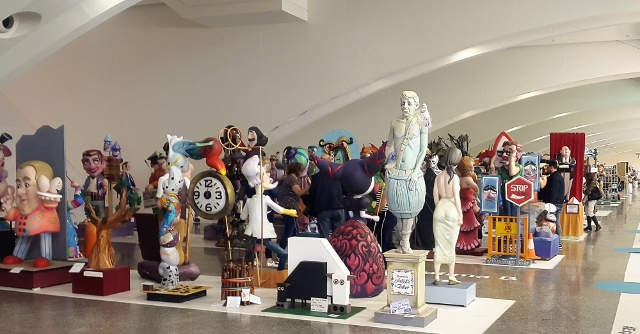 There are so many to choose from and it was really difficult to know what makes a good ninot. We just enjoyed seeing them and didn’t vote.
There are so many to choose from and it was really difficult to know what makes a good ninot. We just enjoyed seeing them and didn’t vote.
All the pardoned ninots, dating back several years, are exhibited in the Falles Museum which, you might remember, we visited in February.
From 1 to 19 March, every day at 2 pm in the Plaza del Ayuntamiento, the city vibrates to the sound of the traditional mascletà, a display of gunpowder explosions that beats out a unique sound. We went to the first one and the noise was tremendous. We couldn’t work out a particular beat but the ground certainly shook.
It was all overseen by the Fallera Mayor and her entourage.
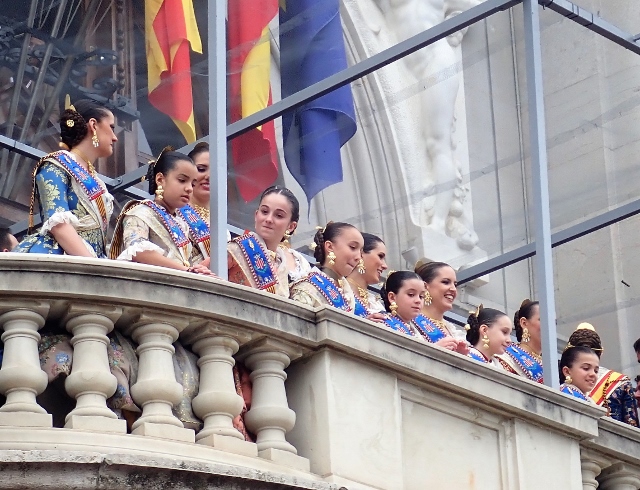 Each Falla committee has a queen but one is then selected as the overall queen of the Falla.
Each Falla committee has a queen but one is then selected as the overall queen of the Falla.
On the night of 15th March the plantà [installation] takes place, when the falleros and falleras – the men and women who construct the falles, get together to work through the night on erecting them, to have them finished by dawn on the 16th. It seemed that not all Falla societies waited until the official start time of 5pm as Mike saw these guys at around midday.
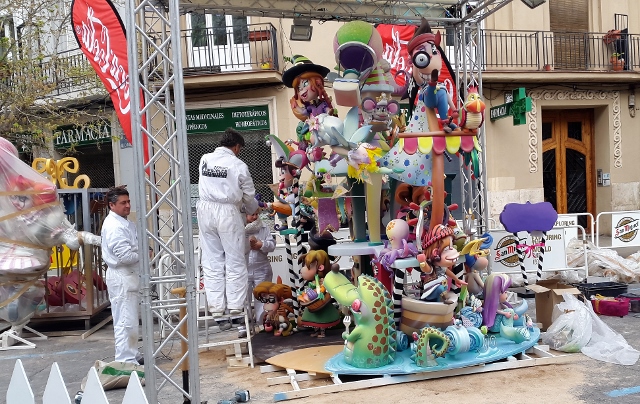 When we first heard about the festival we went to the tourist office and enquired as to where we might see the figures. The answer was “everywhere” and that was absolutely right. There are somewhere between 450 and 750 constructions, and when we went into the city on 16th March they were in every plaza and on many street corners.
When we first heard about the festival we went to the tourist office and enquired as to where we might see the figures. The answer was “everywhere” and that was absolutely right. There are somewhere between 450 and 750 constructions, and when we went into the city on 16th March they were in every plaza and on many street corners.
During the day there were small parades taking place in the local falla committee streets…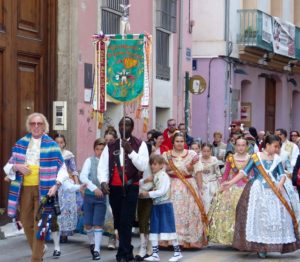
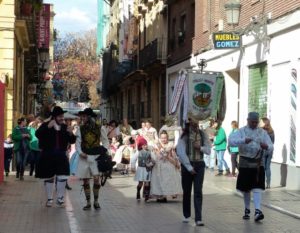
…..and during the evenings of 17/18 March all of the city’s falles members take part in a parade from their respective districts to the Plaza de la Virgin….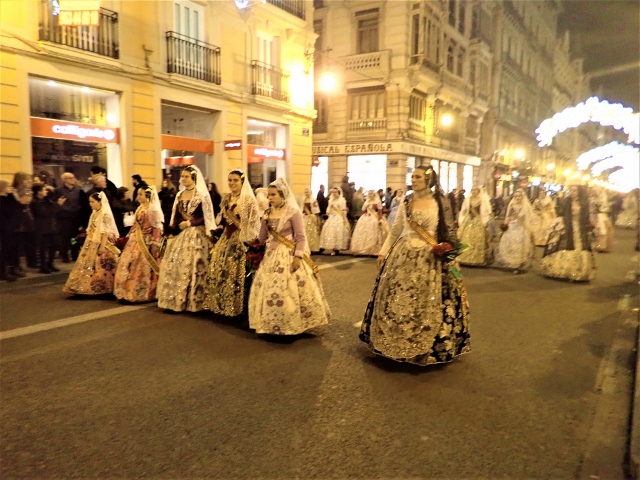
….in order to make an offering of flowers to Our Lady of the Forsaken, a Patron Saint of Valencia. The celebration takes place from 4 pm until past midnight. With all of the bunches of flowers given by the falleras to the Virgin, an impressive 15 metre-high tapestry is formed on the main façade of the Basilica and a mantle is made for the Virgin.
We went in to the city to see the parade and happened to decide to go for a drink and a bite to eat. The café was showing the event on the TV and we quickly realised that only the people in the parade were actually allowed into the Plaza and that the best view of the proceedings was right there on the screen. So we stayed warm and cosy and watched until they had all passed by when it was time to head for the Alameda.
Every night from 15 to 18 March, the sky of Valencia is filled with impressive firework displays. At 12 midnight, people gather on Paseo de la Alameda to enjoy the best display of colour and light. The most spectacular display is on 18th March – the Nit del Foc [Night of Fire], which is the one that we saw. It lasted an impressive 25 minutes.
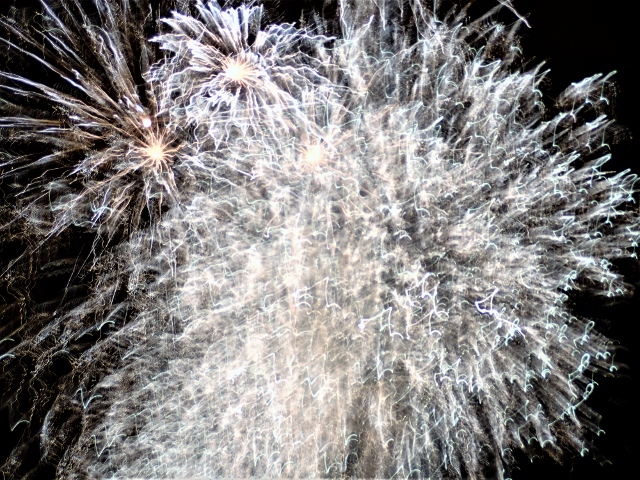

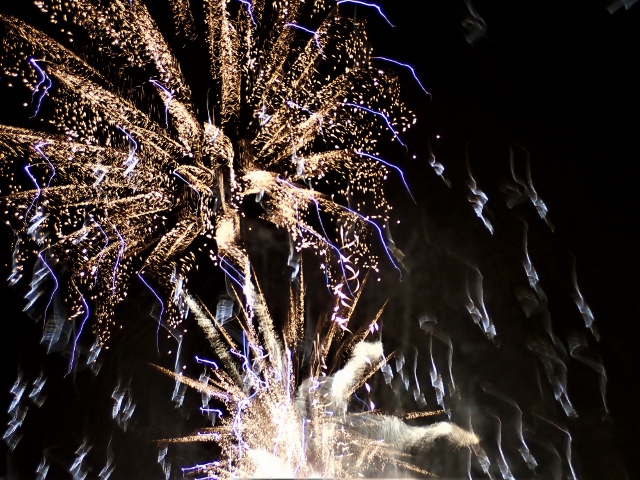 These photographs, however, were taken on the 1st March when, for the first time, Marina Juan Carles I, organised a firework display to start the Falla celebrations in grand style. Because we were at the marina we managed to get a grandstand view and didn’t have to fight with the crowds on the far side of the canal basin.
These photographs, however, were taken on the 1st March when, for the first time, Marina Juan Carles I, organised a firework display to start the Falla celebrations in grand style. Because we were at the marina we managed to get a grandstand view and didn’t have to fight with the crowds on the far side of the canal basin.
On 19 March all of the sculptures, both those in the large and the children’s categories, go up in flames. At 10 pm the Cremà of the children’s sculptures begins.
Two hours later it is the turn of the large monuments.
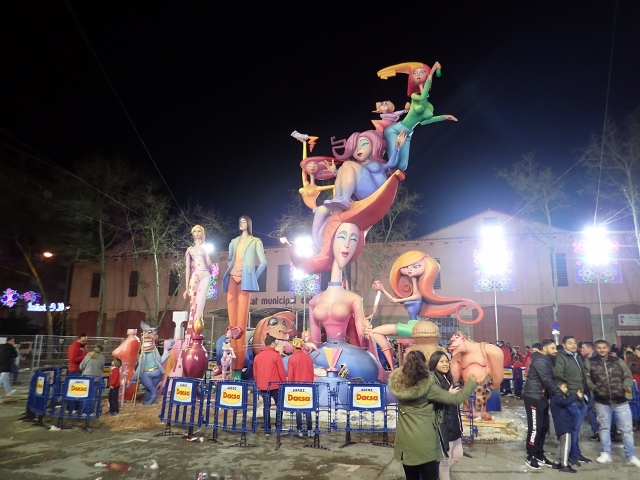
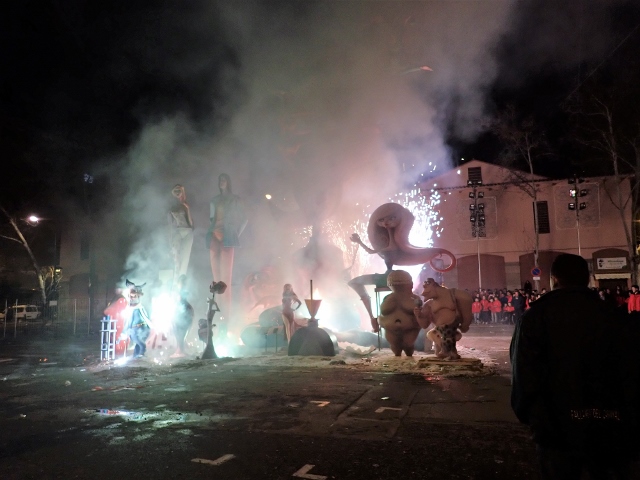 The falla in the Plaza del Ayuntamiento was the last one to burn, at 1 am in the morning.
The falla in the Plaza del Ayuntamiento was the last one to burn, at 1 am in the morning.
It is always preceded by a small display of spectacular fireworks which fill the square with noise, light and colour, leading to the Cremà of the city’s last falla and with it the end of the festival.
The final fiesta – and yet another local holiday! – was for San Vincente Ferrer, another patron saint of the Valencian community. He is known for being one of the most prolific Catholic miracle workers and this aspect gets most emphasis during the day.
Once again there is an offer of flowers made – to an altar outside what was his home. There is apparently a fairly formal procession of religious associations but the most eventful unusual part are the various plays depicting his miracles which are staged by local children under 13. 13 seems to be important as across the city 13 different stages are erected. They are really quite elaborate…..
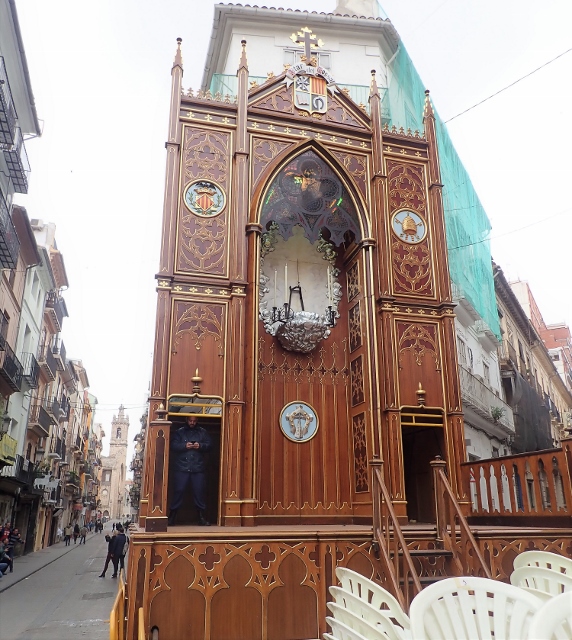 ….and the performances apparently last around 2 hours.
….and the performances apparently last around 2 hours.
Those of you who are observant might have noticed that I have failed to mention Easter. We did see some small Easter weekend parades [but nothing like the elaborate “Stages of the Cross” seen in other places] and on Palm Sunday there was a special service in the cathedral but Valencia appears to save itself for the Corpus Christi festivities in June. I wrote about the “Rocas” in an earlier blog but, all being well, we won’t actually see this parade as we are hoping to leave Valencia in the next week.
So, as I hope I have demonstrated, Valencia thoroughly appreciates its fiestas and we have very much enjoyed partying along.

